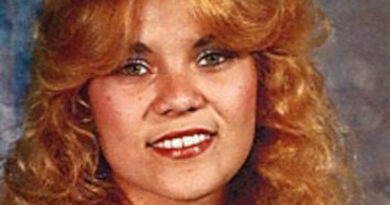Johnny Gosch The 12-Year Old Paperboy Disappears in West Des Moines Iowa
On the early morning of September 5, 1982, a 12-year-old paperboy named Johnny Gosch vanished while delivering newspapers in West Des Moines, Iowa. His disappearance became one of the most mysterious and debated missing child cases in the United States. Despite extensive investigations, there have been no arrests, and the case remains open as of 2024. Johnny’s abduction not only impacted the local community but also spurred national conversations about missing children and the adequacy of law enforcement in handling such cases.
Johnny’s disappearance was among the first to utilize the concept of featuring missing children’s photos on milk cartons, a campaign designed to increase public awareness. Over the years, the case has seen numerous twists, alleged sightings, and controversial theories—some corroborated, many disputed. Yet, no one has been able to conclusively identify Johnny’s whereabouts, making it an enduring mystery.
Events Leading to Johnny Gosch’s Disappearance
On the morning of his disappearance, Johnny left home to begin his paper route, as he did regularly. He took his family’s dog, Gretchen, along with him, but unusually, he did not wake his father for assistance, as he often did. Witnesses later reported seeing Johnny at the local paper drop-off site, where he picked up his bundles for delivery. The last confirmed sighting came from fellow paperboys who saw him near a two-toned blue car. One of them described seeing Johnny talking to a man who seemed suspicious.
Shortly after this encounter, another witness, John Rossi, recalled seeing Johnny and the man together. Rossi thought something was off and even attempted to remember the license plate number but was unsuccessful. Johnny’s delivery wagon, filled with newspapers, was later found abandoned just two blocks from his home.
When Johnny’s parents, John and Noreen Gosch, began receiving calls from customers about missed deliveries, they immediately sensed something was wrong. They reported his disappearance to the West Des Moines Police Department, but their efforts were initially met with skepticism. At the time, police policy dictated that a missing child could not be classified as such until 72 hours had passed, delaying the search for Johnny.
Initial Investigation and Witness Accounts
The initial investigation into Johnny’s disappearance faced criticism, particularly from his mother, Noreen Gosch. She believed that the authorities’ response was too slow and ineffective. Noreen has been vocal about the inadequacies of the early investigation, often citing the lack of urgency and coordination among law enforcement agencies. Initially, authorities suggested that Johnny might have run away, but they later retracted this theory and classified the case as a likely kidnapping.
Witnesses reported seeing a man driving a blue car who approached Johnny while he was delivering newspapers. The driver reportedly asked for directions, raising suspicions among those who saw the interaction. Another witness, a neighbor, observed a second man trailing Johnny before the incident. Despite these witness accounts, no arrests were made, and no significant leads emerged from the initial investigation.
Months later, Noreen claimed that a private investigator informed her of a sighting of Johnny in Tulsa, Oklahoma. According to this account, a young boy resembling Johnny yelled for help before being dragged away by two men. The lead, however, did not produce any tangible results. As years passed, Johnny’s case grew cold, and Noreen began to seek help from private investigators, including notable figures like Jim Rothstein and Ted Gunderson.
Controversial Theories and Alleged Sightings
Over the years, Noreen Gosch has shared various accounts of what she believes happened to her son. In 1997, she claimed that Johnny, now an adult, visited her at her apartment. According to Noreen, Johnny arrived with an unidentified man, stayed for a short conversation, and then left, stating that he still feared for his safety. While Noreen insists that this meeting was genuine, Johnny’s father has expressed doubts, suggesting it might have been someone else impersonating Johnny.
In 2006, the case gained renewed attention when Noreen found photographs left at her front door. The images reportedly showed boys in captivity, one of the boys in the photos was never identified, Noreen believed this was Johnny. The authenticity of the photos has been questioned, with some claiming they were taken in Florida years earlier and were unrelated to Johnny’s disappearance. Despite these controversies, Noreen continues to assert that the boy in the photos is indeed her missing son.
Paul Bonacci, a man who was convicted of perjury in another case, also claimed that he was involved in Johnny’s abduction as part of a larger child-trafficking ring. While some investigators considered Bonacci’s account credible, others, including law enforcement, remained skeptical. Bonacci described details about Johnny that were not publicly known, further fueling speculation about the true nature of his abduction. Despite these claims Bonacci was never officially charged or arrested for Johnny’s abduction.
The Potential Connection Between Johnny Gosch and Eugene Martin
In the years following Johnny Gosch’s disappearance, another Iowa paperboy, Eugene Martin, went missing under similar circumstances. This led to widespread speculation about whether the two cases were related. While no conclusive evidence has emerged to establish a direct link, the similarities between the disappearances have fueled theories that they may be connected.
Eugene Martin vanished on August 12, 1984, nearly two years after Johnny’s disappearance. Like Johnny, Eugene was delivering newspapers for The Des Moines Register when he was last seen. He went missing in the early hours of the morning, much like Johnny, and witnesses reported seeing him talking to a man before his disappearance. Both boys were about the same age—Johnny was 12 and Eugene was 13 at the time of their disappearances—and lived in the Des Moines area. Eugene’s disappearance, however, occurred on the city’s south side, while Johnny’s occurred in the west suburb of West Des Moines.
Events Surrounding Eugene Martin’s Disappearance
Eugene Martin was last seen at around 5:00 AM near Southwest 12th Street and Highview Drive in Des Moines. Like Johnny, Eugene was working his paper route alone that day. Witnesses reported seeing Eugene sitting on a curb, folding newspapers, and talking to a man. The conversation seemed casual, but it raised suspicions due to the parallels with Johnny’s case. Later that morning, Eugene’s newspaper bag was found abandoned, suggesting that he was taken unexpectedly.
Eugene’s disappearance prompted a more immediate response from law enforcement compared to Johnny’s case, largely due to new protocols established after Johnny’s disappearance. The incident was promptly classified as a kidnapping, with police and FBI involvement from the outset. Despite the increased urgency, however, no suspects were identified, and leads eventually dwindled. Like Johnny’s case, Eugene’s investigation also turned cold, leaving behind many unanswered questions.
Noreen Gosch’s Claims About Eugene Martin’s Abduction
Noreen Gosch, Johnny’s mother, has publicly stated that she was warned about Eugene’s kidnapping months before it happened. According to Noreen, a private investigator working on Johnny’s case informed her that another paperboy would be abducted in the summer of 1984 on Des Moines’ south side. She claimed that the kidnapping would occur during the second weekend of August, which proved to be accurate when Eugene disappeared on August 12. This eerie prediction has raised suspicions about the potential connection between the two cases and the possibility of a larger, coordinated effort targeting young boys in the area.
Noreen has also suggested that both Johnny and Eugene were taken by a network involved in child trafficking. While these claims are difficult to verify and have been met with skepticism by authorities, they remain a central part of the ongoing narrative surrounding Johnny’s disappearance.
Investigative Challenges in Connecting the Two Cases
Although the circumstances of both cases are similar, authorities have been unable to find definitive evidence linking Johnny Gosch’s and Eugene Martin’s disappearances. Police have considered the possibility of a serial abductor or an organized trafficking operation but have struggled to identify a suspect or a concrete motive. The lack of physical evidence in both cases has made it challenging for investigators to pursue viable leads.
Theories about the connection between the two boys’ disappearances have often been driven by circumstantial similarities rather than solid evidence. In both cases, the boys were young, working alone in the early morning hours, and went missing without a trace. The timing of Eugene’s disappearance, occurring almost exactly two years after Johnny’s, has only added to the speculation.
Public and Media Interest in the Connection
Eugene Martin’s case drew significant media attention, partly due to its similarity to Johnny Gosch’s disappearance. By 1984, Johnny’s case had already become well-known nationally, and Eugene’s disappearance further highlighted the vulnerability of paperboys working alone in the early hours. The potential connection between the two cases captured public interest, leading to widespread fear among parents in Des Moines and other parts of Iowa. As a result, new safety measures for young paper carriers were introduced, and both boys’ stories were featured on milk cartons as part of a nationwide campaign to find missing children.
An Unresolved Link
While the disappearance of Johnny Gosch remains one of America’s most mysterious unsolved cases, the potential connection to Eugene Martin’s disappearance adds another layer of complexity. Despite the similar circumstances, no conclusive evidence has emerged to link the two cases. However, the eerie parallels have led many to believe that the same individual or group could be responsible for both abductions. To this day, the cases of Johnny Gosch and Eugene Martin remain unsolved, and the question of whether they are connected continues to haunt investigators and the public alike.
Impact of Johnny Gosch’s Disappearance on Missing Children Advocacy
Johnny’s case not only captured national attention but also highlighted critical issues in missing children investigations. In response to her son’s abduction, Noreen founded the Johnny Gosch Foundation, focusing on raising awareness about the methods of sexual predators and advocating for stronger laws regarding missing children cases. Her lobbying efforts led to the passage of “The Johnny Gosch Bill” in Iowa in 1984, which mandated immediate police response to missing child reports. Similar legislation was later enacted in other states.
Johnny’s story also contributed to the establishment of the National Center for Missing and Exploited Children, a pivotal organization in the search for missing children across the country. Noreen Gosch’s advocacy brought significant changes to how authorities handle missing child cases, increasing both public awareness and law enforcement accountability.
The Legacy of Johnny Gosch’s Case
The disappearance of Johnny Gosch remains one of the most mysterious and unsettling cases in U.S. history. While no definitive evidence has emerged to explain his fate, the case has inspired books, documentaries, and a series of theories that range from plausible to conspiratorial. The 2014 documentary Who Took Johnny delved into the case’s complexities, featuring interviews with the Gosch family and examining the broader issues surrounding missing children cases.
Despite the passage of more than four decades, Noreen Gosch has never given up hope of finding answers about her son’s disappearance. Whether Johnny Gosch is still alive or what truly happened to him on that September morning in 1982 remains unknown, leaving his case unsolved but never forgotten.
Conclusion
The disappearance of Johnny Gosch in 1982 marked a turning point in the public’s awareness of child abduction cases. It underscored the need for more effective laws, better response protocols, and greater community involvement in locating missing children. Johnny’s case, though still unsolved, serves as a reminder of the importance of vigilance and advocacy when it comes to protecting children.
Discover more from City Towner
Subscribe to get the latest posts sent to your email.




